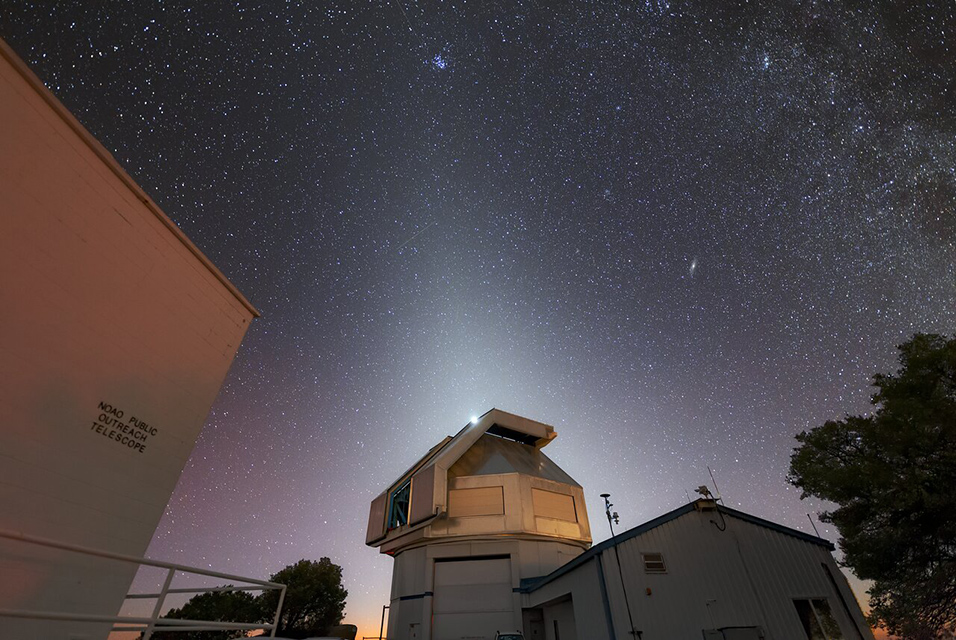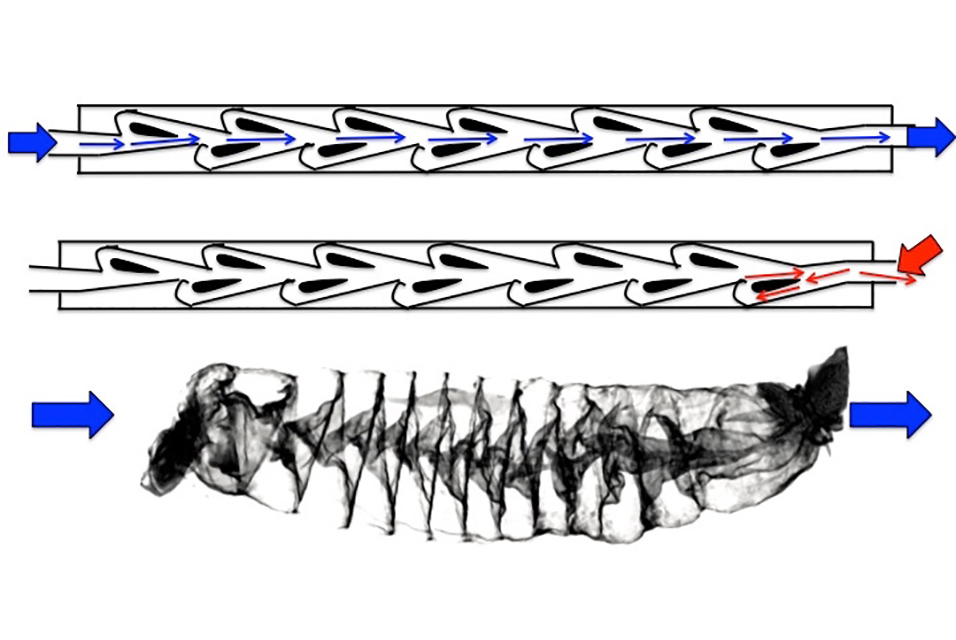TUCSON, AZ.- After successfully passing final review by NASA and the National Science Foundation, the NEID spectrometer – a new tool for discovering planets outside of our solar system – has begun its scientific mission at Kitt Peak Observatory in Arizona. The newest and one of the most precise tools ever built to detect exoplanets, NEID will discover new planets by measuring the minute gravitational tug they make on their host stars.
Over the past year, researchers at the
University of Arizona have led instrument commissioning and demonstrated that the tool meets the technical and scientific requirements for operation. The university also serves as the hub for NEID's software pipeline, which translates subtle shifts in the spectrum of starlight into data that tell astronomers about any planets orbiting a star that would be impossible to observe directly.
NEID detects exoplanets by measuring the subtle effect these planets have on their parent stars. Planets tug gravitationally on the star they orbit, producing a small "wobble" – a periodic shift in the velocity of the star that can be measured. Jupiter, for example, induces a 29 mph wobble on the sun. Smaller planets induce smaller wobbles; Earth induces a wobble of 0.23 mph – about as fast as a desert tortoise.
Existing instruments can measure speeds as low as just over 2 mph, which is a slow walking pace, but NEID was built to be more than twice as precise, so that it can detect the wobble of Earth-mass exoplanets.
"The instrument is performing exceptionally well, more than beating our precision requirement, and we believe it is sensitive to planets only slightly larger than the Earth," said Chad Bender, NEID's instrument scientist and an associate astronomer at the University of Arizona's Steward Observatory.
The seething convection on the surface of stars, threaded by invisible lines of magnetic force and marred by ever-changing active regions and dark starspots, can pose a substantial challenge to NEID's measurements. This stellar activity is one of the major impediments to detecting rocky planets like Earth.
For very small signals, it is difficult to separate the signal caused by a small planet from signals caused by stellar activity. To better understand this problem, the NEID team uses a small solar telescope to point the instrument at the sun during the daytime.
"We can use observations of the sun to better understand stellar activity and then apply that knowledge to other stars that are similar to the sun, where we are looking for Earth-like planets," Bender said.
The NEID spectrometer derives its name from the Tohono O'odham word ñeid which means "to see," a name selected after consultation with the Tohono O'odham Nation. The researchers are honored to be able to conduct their research on Iolkam Du'ag, or Kitt Peak, in Arizona – a site with cultural significance to the Tohono O'odham Nation.
NEID also stands for NN-EXPLORE Exoplanet Investigations with Doppler spectroscopy. (NN-EXPLORE is a joint NASA/NSF Exoplanet Exploration Program.) The new instrument, an extreme precision radial velocity spectrometer, is collecting starlight on the 3.5-meter WIYN telescope at Kitt Peak National Observatory, a program of the National Science Foundation's National Optical-Infrared Astronomy Research Laboratory, or NOIRLab. NEID's solar telescope marks the return of solar observations to the peak.
"The sun points the way," said Suvrath Mahadevan, professor of astronomy and astrophysics at Pennsylvania State University and NEID principal investigator. "For decades, the iconic and now decommissioned McMath Pierce telescope at Kitt Peak was the premier facility for studying the sun. NEID is now the bridge that connects exoplanet science to solar observations, the sun to the stars, and a bridge that connects Kitt Peak's history to its present and future."
All data from NEID's observations of the sun are being released publicly.
"We've already released more than 40,000 solar spectra to the public and add several hundred new spectra each day. This archive provides a wealth of information about stellar activity and also NEID's underlying performance," said Taran Esplin, a postdoctoral researcher at Steward Observatory and NEID team member.
The NEID instrument is funded by the joint NASA/NSF Exoplanet Exploration Program, NN-EXPLORE. The 3.5-meter WIYN Telescope is a partnership of Indiana University, the University of Wisconsin; Penn State; the University of Missouri, Columbia; Purdue University; the NSF and NASA.










